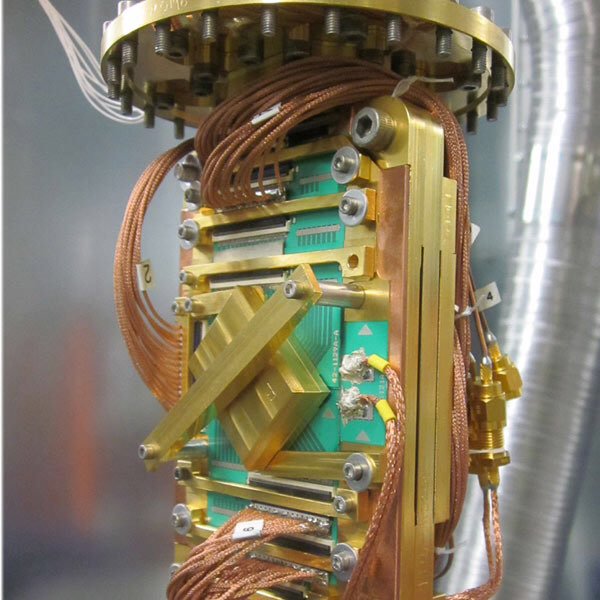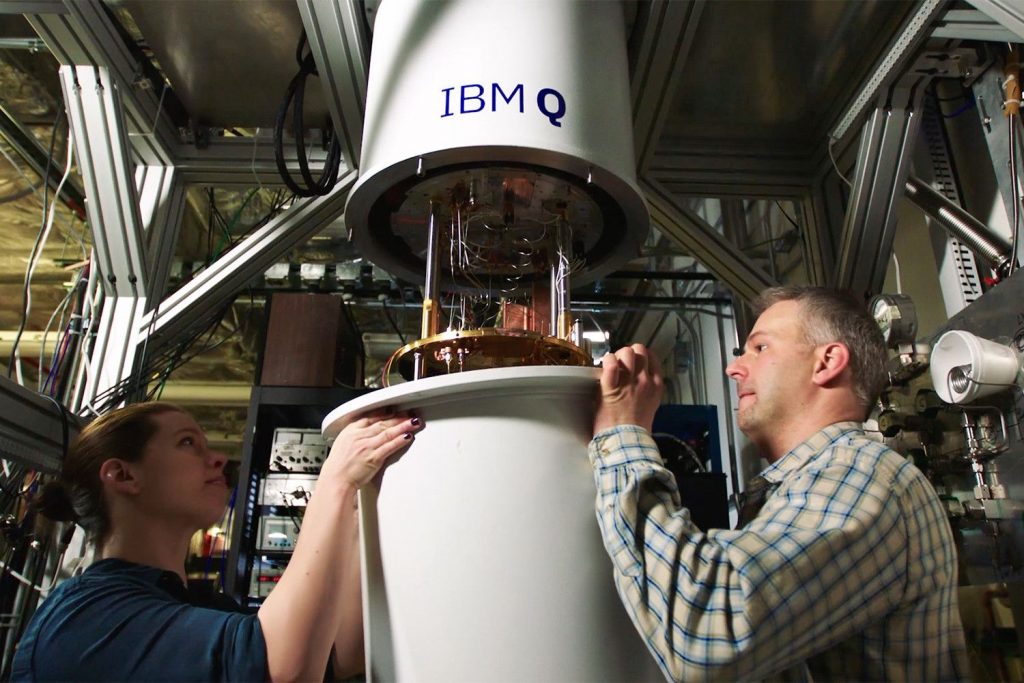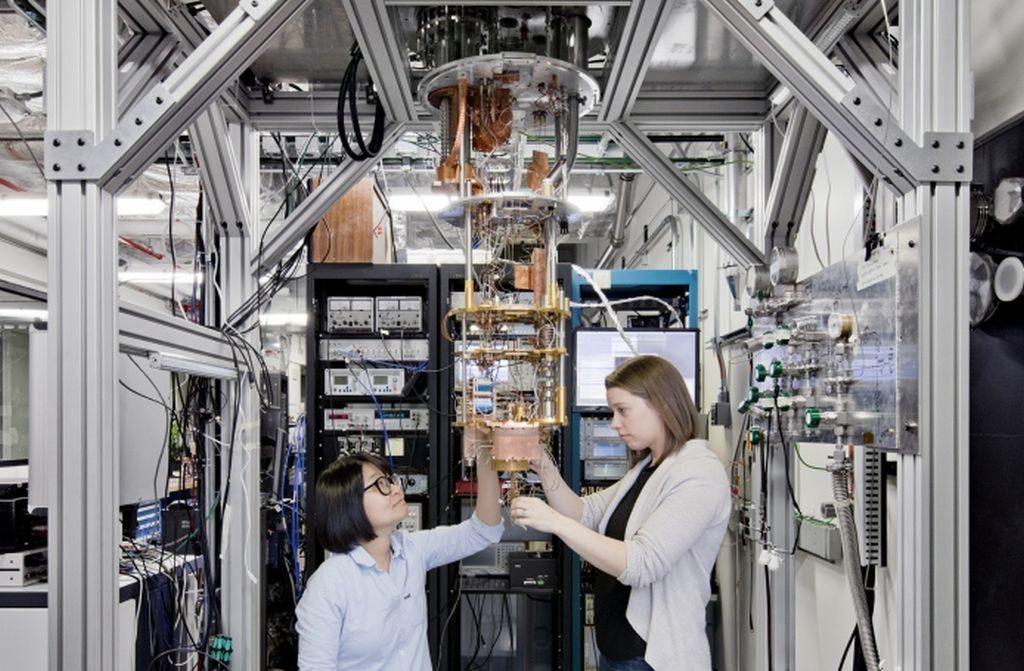Why is quantum computing important: optimization
Update: Google claims to have reached quantum supremacy
The tech giant unveiled its x-quantum computer chip Bristlecone in March 2018 (src: cnet)
original nasa paper: https://drive.google.com/file/d/19lv8p1fB47z1pEZVlfDXhop082Lc-kdD/view
book: https://deepai.org/machine-learning/researcher/eleanor-g-rieffel https://www.amazon.com/Quantum-Computing-Introduction-Engineering-Computation/dp/0262015064
Scott’s Supreme Quantum Supremacy FAQ!
Google claims to have reached quantum supremacy – built the first quantum computer that can carry out calculations beyond the ability of today’s most powerful supercomputers, a landmark moment that has been hotly anticipated by researchers
byu/QuantumThinkology inFuturology
https://en.wikipedia.org/wiki/List_of_quantum_processors
“You’ve likely heard of quantum computing. Amazingly, it’s a concept as old as digital computers. However, you may have discounted it as a far off future that’s about as relevant to your life as flying cars. Well, it may be time to reconsider. Quantum computing is progressing at a rate that is surprising even those who are building it. ”
…
“The other aspect of quantum computing that challenges our understanding of how the quantum world works is what’s called entanglement. Entanglement describes a phenomenon in which two quantum particles are connected in such a way that no matter how great the distance between them they will both have the same state when they are measured.
At first blush that doesn’t seem to be all that novel. After all, if I were to paint two balls red and then separate them by the distance of the universe, both would still be red. However, the state of a quantum object is always in what’s called a superposition, meaning that it has no inherent state. Think of our coin flip example from earlier where the coin is in a superposition state until it stops spinning.
If instead of a color its two states were up or down it would always be in both states while also in neither state, that is until an observation or measurement forces it to pick a state. Again, think back to the spinning coin.
Now imagine two coins entangled and flipped simultaneously at different ends of the universe. Once you stop the spin of one coin and reveal that it’s heads the other coin would instantly stop spinning and also be heads.
If this makes your head hurt, you’re in good company. Even Einstein had difficulty with entanglement calling it, “spooky action at a distance.” His concern was that the two objects couldn’t communicate at speed faster than the speed of light. What’s especially spooky about this phenomenon is that the two objects aren’t communicating at all in any classical sense of communication.
Entanglement creates the potential for all sorts of advances in computing, from how we create 100 percent secure communications against cyberthreats, to the ultimate possibility of teleportation.”
src: https://www.inc.com/thomas-koulopoulos/the-end-of-digital-revolution-is-coming-heres-whats-next.html
Links:
https://physicsworld.com/a/neuron-inspired-electrical-model-goes-quantum/
https://quantum-computing.ibm.com/support
https://futurism.com/china-develops-a-quantum-computer-that-could-eclipse-all-others
https://www.research.ibm.com/ibm-q/
https://outofthefogresearch.com/
https://www.ibm.com/blogs/research/2018/04/ibm-startups-accelerate-quantum/
https://www.howitworksdaily.com/how-quantum-computers-can-end-traffic-jams/
related videos:
John Martinis
Research Scientist and Professor of Physics Google and UCSB Quantum Supremacy:
- Checking a Quantum Computer With a Classical SupercomputerAbstract:
- As microelectronics technology nears the end of exponential growth over time, known as Moore’s law, there is a renewed interest in new computing paradigms such as quantum computing.
- A key step in the roadmap to build a scientifically or commercially useful quantum computer will be to demonstrate its exponentially growing computing power.
- I will explain how a 7 by 7 array of superconducting xmon qubits with nearest-neighbor coupling, and with programmable single-and two-qubit gate with errors of about 0.2%, can execute a modest depth quantum computation that fully entangles the 49 qubits.
- Sampling of the resulting output can be checked against a classical simulation to demonstrate proper operation of the quantum computer and compare its system error rate with predictions.
- With a computation space of 2^49 = 5 x 10^14 states, the quantum computation can only be checked using the biggest supercomputers.
- I will show experimental data towards this demonstration from a 9 qubit adjustable-coupler “gmon” device, which implements the basic sampling algorithm of quantum supremacy for a computational (Hilbert) space of about 500.
- We have begun testing of the quantum supremacy chip.
- Bio: John Martinis pioneered research on superconducting quantum-bits as a graduate student at U.C. Berkeley. He has worked at CEA France, NIST Boulder, and UC Santa Barbara. In 2014 he was awarded the London Prize for low-temperature physics research on superconducting qubits. In 2014 he joined the Google quantum-AI team, and now heads an effort to build a useful quantum computer.
Dr. Ronny Stolz
- Head of the Research group Magnetometry
- Head of the Radiometry group in the Deptm. of Quantum detection Leibniz Institute of Photonic Technology SQUIDS
- From Ideas to Instruments and Applications Abstract:
- Still after more than 5 decades after the invention of Superconducting Quantum Interference Devices (SQUIDs), they are driving research as an enabling technology and lead to emerging applications due to their unique properties.
- This presentation will not provide an exhaustive review on the background, theory and working principles of SQUID sensors and the Josephson effects, but will review the key facets of SQUID design, fabrication, readout circuitry and operation.
- In terms of fabrication technology, a short excursus will be provided on the differences of low and high temperature SQUIDs, new developments, and specific aspects in their readout circuitry.
- There is a variety of SQUID readout electronics which enable to use SQUIDs in a number of applications with demanding properties such as bandwidths of more than 100 MHz, exceptional slew rate and dynamic range without compromises on the usable resolution even at very low frequencies.
- Some exampleswill be introduced and discussed in view of specific applications.Of course there is no review article without the fascinating insights into applications of SQUIDs. We will shortly review a number of areas such as non-destructive evaluation, biomagnetic, NMR and geophysical measurements as well as emerging applications in detector physics as high frequency amplifiers and multiplexing circuits.
- Bio:
- Research Interests/Areas of Expertise: Photonic magnetometers and applications, Supercondcuting Quantum Interference Detectors (SQUIDs) and applications,
- Magnetic and electromagnetic sensors and methods for near surface geophysics Supercond
- radiation detectors
- Macroskopic quantum systems
- Ultra-precision magnetometry
- Superconducting materials and technologies
- Processing of data acquired with magnetic and electromagnetic sensors
- Publications: More than 165 scientific papers and >100 of technical reports and non-scientific works, 3 book chapters and 4 patent families.
Nobuyuki Yoshikawa
- Professor Yokohama National University Superconducting computing: present status and perspectivesAbstract:
- Recent rapid growth in high-performance processor applications, such as AI and cryptocurrency, ultimately enhances the demand of more energy-efficient computing technologies, which would not be achievable by the CMOS technology nearing the end of Moore’s law.
- Superconducting computing based on Boolean logic is thought to be the most promising candidate as post-CMOS computing in terms of performance and energy efficiency.
- A distinguished feature in the superconducting computing is the availability of two unique logic styles: one is high-speed single-flux-quantum logic and the other is energy-efficient adiabatic logic.
- After reviewing the present research status in superconducting computing, this talk will present a perspective on energy-efficient superconducting computing based on adiabatic quantum flux parametron (QFP) with introducing new circuit technologies, including EDA tools, a direct-coupled QFP, a reversible QFP, three-dimensional integration and hybridization with CMOS memories.
- A roadmap toward the realization of superconducting computing will be discussed.
- Bio:
- Nobuyuki Yoshikawa received the Ph.D. degrees in electrical and computer engineering from Yokohama National University, Japan in 1989.
- Currently he is a professor of the Department of Electrical and Computer Engineering, Yokohama National University.
- He is also a chair of the Superconducting Electronics Committee of the Japan Society for the Promotion of Science (JSPS) and the Technical Committee on Metal and Ceramics of the Institute of Electrical Engineering of Japan.
- His research interests include superconductive devices and their application in digital and analog circuits.
- He is also interested in single-electron-tunneling devices, quantum computing devices, and cryo-CMOS devices.
- He has led the Superconductivity Electronics Group in Yokohama National University.
- He is an expert in the field of superconductivity electronics and the foremost active researcher of superconducting logic.
- He has published more than sixty articles on single-flux-quantum (SFQ) and adiabatic quantum flux parametron (AQFP) circuits or closely related topics in the past five years alone.
src: https://isec2019.org/sites/isec19/files/2019-07/program_v10.pdf
related Podcasts:
Tweets:
https://twitter.com/hashtag/Quantum
https://twitter.com/hashtag/QuantumComputing
liked this article?
- only together we can create a truly free world
- plz support dwaves to keep it up & running!
- (yes the info on the internet is (mostly) free but beer is still not free (still have to work on that))
- really really hate advertisement
- contribute: whenever a solution was found, blog about it for others to find!
- talk about, recommend & link to this blog and articles
- thanks to all who contribute!






